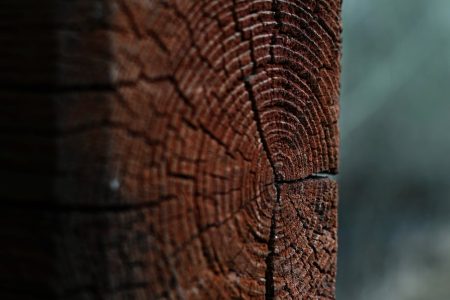Why Are Brown Logos Only A Popular Choice For Some Small Business Owners?
As you probably know, brown logos are not for everyone. Some people have a very big dislike for anything brown. This is however, very unfair as brown is a color that might not be everybody’s cup of tea but in combination with another color, like green or beige it will look stunning. In the world of art it has been used for many centuries already and is an appreciated color. Let me tell you why you should try creating a brown logo design:
- The power of the color brown – It’s history
- Who is this color for? – what kind of people and small businesses would pick brown logo designs?
- Famous brown logos
- Beautiful combination logos with brown
- Why is it not for everyone?
The Power Of The Color Brown

Most of all, brown is a color that is deeply rooted in history and is associated with practicality and affordability. It has been an important color in the art world for centuries, providing warm and natural backgrounds to portraits and landscapes. Understandably, its origins are linked to the working class and rural communities, imbuing it with a sense of resilience and perseverance, even stubbornness.
Today, brown continues to inspire a growing movement towards sustainability and environmentalism. It’s timelessness makes brown a versatile color that can be used in a variety of applications. It has a rich history, and a deep-rooted symbolism.
What Kind Of Businesses Would Pick Brown Logos
Well, not surprisingly, brown logos tend to be popular among businesses related to earth, nature, and organic products. As a color that is often associated with stability and reliability, brown can help create a sense of trust with customers. Brands that offer goods or services related to outdoor activities, farming, natural foods, or eco-friendly products might choose brown logos.
Furthermore, brown is also a common choice for leather goods businesses. After all, this color can convey a sense of rustic charm and elegance that appeals to customers seeking high-quality, handmade products. Overall, brown logos can convey a sense of authenticity and environmental consciousness, making them a good choice for businesses that embody those values. So why is it not liked by all small businesses? More on that later.
Famous Brown Logos In The World
Do you know of any brown logos? It’s not the easiest thing to actually remember brown logo designs, however I can name the following five:
1. UPS:
The United Parcel Service, commonly known as UPS, is an American courier and delivery company founded in 1907. In 1961, UPS introduced a new logo that featured a brown shield with a white bow-tied package and the company’s initials. This brown logo design remained relatively unchanged for several decades until 2003, when the logo was updated to the current version.
For instance, the new logo features a simplified shield with the company’s initials inside a gold and brown shield. Trying to convey a sense of dependability and trustworthiness while also being modern and forward-thinking.
2. Hershey’s: Brown Choclolate Logo
Is an American chocolate manufacturer founded in 1894 by Milton Hershey. As most people have noticed, the Hershey brown logo has undergone several changes. In 1921, it was updated with a yellow outline around the chocolate bar and the removal of the word “milk” from the name. Furthermore, in 1930, the font was changed, and Hershey’s Kisses became more prominent in the logo. In 1973, the Kisses were removed and a stylized “HERSHEY’S” written in bold capital letters was used. Above all, the company has always maintained a focus on its signature products and brand identity.
3. Nespresso:
Well, the Nespresso logo in brown was introduced in 1991 with the launch of the brand’s first machine, the Nespresso M100. Prior to 1991, Nespresso’s logo had been red and white. The decision to switch to brown was inspired by the color of coffee and the goal of creating a more luxurious look and feel for the brand. Furthermore, the new logo featured the word “Nespresso” in brown block letters with a stylized coffee bean in place of the letter “o”.
More importantly, this logo has since become synonymous with the Nespresso brand and is widely recognized by coffee lovers around the world. Over the years, the logo has undergone some minor updates and variations, but the brown color and coffee bean motif have remained at its core.
4. MG: Brown Logo For The Classic Sports Car
So, the MG logo has gone through several iterations over the years, but it has always featured the letters “MG” in some form. As for the specific use of brown in the logo, this has not been a consistent element throughout the brand’s history. However, brown has been used as a secondary color in some MG logos and branding materials over the years.
One notable example is the MG brown logo used in the 1970s, which featured a simple, sans-serif font in black, with the letters “MG” in brown. This logo was often used alongside imagery of classic MG sports cars, which were often featured in brown or other earthy tones.
Overall, the use of brown in the MG logo has been relatively limited.
5. Timberland:
Last example, Timberland. This is an American outdoor clothing and footwear company founded in 1952.
Surprisingly, the Timberland brown logo was first introduced in 1973, when the company was founded in Abington, Massachusetts. Back then, the logo features a tree surrounded by a circle, with the Timberland name written above it. It still looks pretty much the same.
This iconic logo has been used on all of the company’s products, including boots, apparel, and accessories. Above all, the brown logo has become a symbol of quality and durability, and is recognized all over the world.
The Color Brown In Combination With Other Colors Appeals More

First of all, the color brown looks better in combination with green because they are both earth tones that complement each other naturally. For instance, brown is usually associated with soil, wood, and tree bark. However, green represents grass, leaves, and foliage. When these colors are used together, they create a peaceful and harmonious natural scene. Furthermore, brown can also bring depth and richness to a composition. Especially since green can add freshness and vibrancy. Additionally, brown and green are often seen together in nature. So it balances well together. Overall, the combination of brown and green is an excellent choice for creating a warm and inviting atmosphere, whether in design, fashion, or nature.
Logos With The Color Brown And Beige
Another great example is that the color brown pairs perfectly with beige. After all, they are both warm, earthy tones that complement each other well. However, brown is a darker color that can add depth and richness to a neutral beige color scheme. I think, the combination of these two colors creates a cozy and organic feel that promotes relaxation and calmness. Above all, brown shades, such as chocolate, mahogany, and chestnut, work particularly well with lighter beige tones. Furthermore, these two colors can be incorporated into various design elements, such as logos for furniture businesses. Whether used in a modern or traditional decor, the brown and beige color combination is always a classic choice that adds warmth and comfort to any space. Overall, brown is a versatile and timeless color that works flawlessly with the beige palette, especially with brown logos.
Why Is It Not For Everyone
Well, brown is actually an easy to color to forget. That’s why. Small businesses tend to forget brown as a choice for logos as it lacks the energy and vibrancy that other colors provide. Small and big companies tend to use colors that communicate their brand personality and values and evoke emotions that resonate with their target audience. For example, blue is a common color for logos as it represents trust, stability, and professionalism. Then there’s red, which is an excellent choice for brands that want to communicate passion, energy, and excitement.
Unfortunately, brown is perceived as a conservative and neutral color, which makes it less effective when it comes to creating a memorable brand identity that stands out in a crowded marketplace. I would recommend using brown in logos in combination with either green or beige and only if you are aiming at a natural look.
